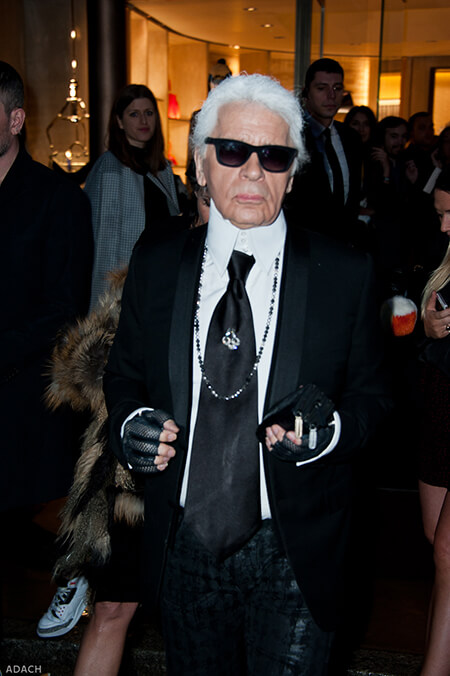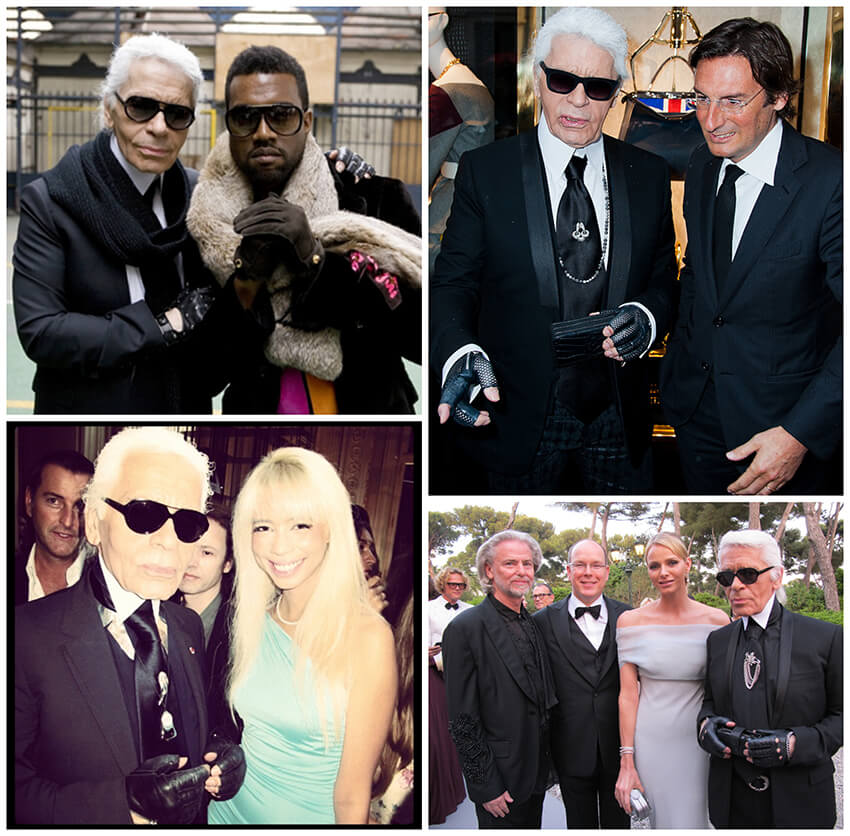Karl Lagerfeld 1933-2019
Reading Time:
1 min {{readingTime}} mins
This week, on Tuesday 19 February, saw the loss of fashion legend Karl Lagerfeld. He died in Paris, at the age of 85. With appearances scheduled in to oversee the Chanel Womenswear show on March 5 this year, he fulfilled his promise to never retire.
Known for his tireless work ethic, and unrivalled ability to stay one step ahead in the incredibly fast-paced world of fashion, Lagerfeld created collections for both Chanel and Fendi simultaneously, in addition to his own namesake label, which celebrated his iconic look. His collections were never just that, better described as ‘experiences’ or installations:
“His Autumn/Winter 2017 collection featured a 115-foot-tall mechanical rocket ship that simulated blast off. For Fall 2014, he built a Chanel shopping centre, its superstore-like aisles bursting with more than 500 different products that included a Chanel-logo chainsaw, doormats, candy, and ketchup. For Fall 2010, he imported enough snow and ice from Sweden to create a 265-ton indoor iceberg. Backdrops of a man-made beach with rippling waves (Spring 2019), a scale rendering of the Eiffel Tower (Fall 2017 Couture), a French brasserie with uniformed bartenders (Fall 2015) and an enormous model of a passenger ship (Cruise 2019)” [1]
Never allowing himself to be tied to just one thing, he leant his creative talent to countless other projects;

noting that his contracts with the celebrated fashion houses never stopped him from doing so.
Amongst these were, ‘’ publishing, photography, film and design projects, including a rule-breaking “fast fashion” collaboration with the mass retailer H&M in 2004 that predated the industry obsession with disruption by more than a decade. Ignoring the traditional expectations of a luxury player, he also designed hotel rooms, video games, motorcycle helmets, a BMW, and a cosmetics range inspired by his also-famous cat, Choupette, and directed an ad campaign for Magnum ice cream bars that featured a life size sculpture of model Baptiste Giabiconi rendered in chocolate. ‘’ [1]
Lagerfeld is credited for a many things we see as fashion-as-we-know-it today: the reinvention of Chanel, the reign of supermodel Claudia Schiffer and designer collaboration with high-street brands. Schiffer even said ‘’What Warhol was to art, he was to fashion.’’ [2] The similarities don’t just stop at his contemporary creative vision, but like Warhol, Lagerfeld was equally prolific.
‘’Lagerfeld was, in many ways, a self-drawn caricature of what a powerful designer should look and sound like, a stylistic god who was worldly and intellectual, commanding and capricious. His bitchy quips (“sweatpants are a sign of defeat,” “trendy is the last stage before tacky,” “I think tattoos are horrible — it’s like living in a Pucci dress full-time,” and many, many nasty digs at celebrities he considered fat or unattractive) became as much a part of the Lagerfeld mystique as were his signature white powdered ponytail and dark sunglasses, or his habit of drinking only Coca-Cola (later, Diet Coke or Coke Zero). But his penchant for flamboyance, combined with occasionally reckless comments in recent years, also resulted in backlash for Chanel. His critiques of Angela Merkel drew particular outrage, as when he evoked the Holocaust on a French talk show in 2017 while protesting Germany’s open-door policy toward Muslim refugees fleeing the Syrian civil war. In any event, there had never been any serious repercussions for the designer nor attempts to unseat him, likely as a result of his outsize stature in the industry and his long history of accomplishments.’’ [1]
Chanel confirmed earlier in the week that Lagerfeld’s right-hand-woman, Virginie Viard, will be his successor in overseeing the creative work for the collections. After Lagerfeld himself both originally hired her and chose her to ‘’represent him’’ in his absence at the Couture show last month, it’s safe to say he would likely approve of the decision.

Author:
Published:








